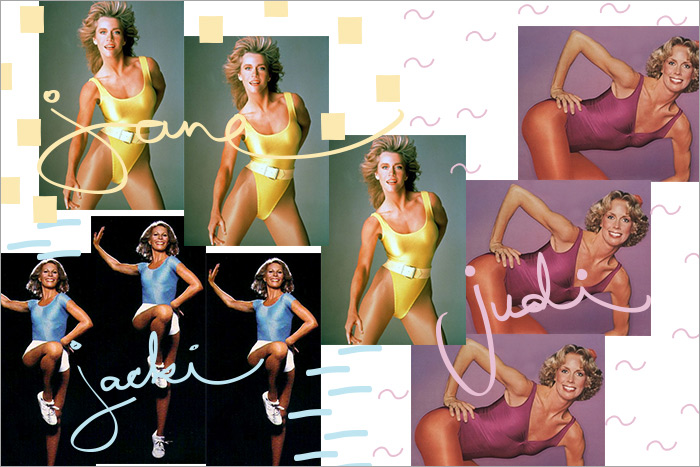’80s Aerobics Goddesses: the Women Who Launched a Fitness Era
 Meet Well+Good’s fitness historian, Natalia Petrzela, PhD, a history professor at The New School in New York City and a premier IntenSati instructor, who shares the sweaty past with us in this new column.
Meet Well+Good’s fitness historian, Natalia Petrzela, PhD, a history professor at The New School in New York City and a premier IntenSati instructor, who shares the sweaty past with us in this new column.
If “workout humor” is a comedic genre (think Hans and Franz or this SoulCycle send up), then 1980s aerobics is definitely the low-hanging fruit. The leotards. Those teeny pink weights. That HAIR.
Even today, those of us who’d rather step-touch than sumo squat must occasionally ignore the smirks of certain (cough, Crossfit-loving) friends when we grapevine off to classes like AKTinMotion or 305 Fitness, formats lifted by, if not somewhat rooted in, the aerobics craze that boasted 22 million participants in the mid '80s.
“Aerobics diva” might today conjure an American-Apparel-costumed caricature, but the legacy of this massive trend goes way, way beyond a love of Lycra and leg lifts.
So whom do we credit with the rise of aerobics—and those high-cut leotards?
In the late 1960s, when health clubs were still mostly-male preserves, a trained dancer named Jacki Sorensen designed “Aerobic Dancing” for other Air Force wives living on the Puerto Rico base where her husband was stationed. When Sorensen returned to the mainland, she breezed through a difficult aerobic fitness exam and realized her playful choreography happened to be an incredible workout. Sorensen’s mission became to spread the rigorous fun of Aerobic Dancing worldwide, and she soon gained thousands of followers and a prestigious role advising Presidents Nixon and Ford. Unapologetic about her feminine aesthetic, she also launched a fashion line featuring the “stretch white shorts” and “support pantyhose” that became her signature look (though likely not for White House sit-downs).

{{post.sponsorText}}
Serendipitously, in 1969 another dancer, Northwestern grad Judi Sheppard Missett, devised a similar program that became Jazzercise (heard of it?). When Missett’s hardcore following of San Diego military wives faced reassignment, these heartbroken students refused to abandon their favorite workout–so they became instructors themselves. Missett franchised the program, claiming Jazzercise world domination by 1984: $40 million revenue, 350,000 students and 2,700 instructors (99 percent women), the “hotshots” among whom charged $2–$3 per classes that capped at 100. (The only bigger franchise in the U.S. was Domino’s Pizza!)
Technology—if not quite Jawbones and streaming workouts—enabled the global aerobics sensation as branded records and VHS allowed women to follow pre-choreographed routines in the multiplying studios catering to dance-cardio devotees as well as in their churches, community centers, and living rooms. The obsession wasn't uniquely American; Canadians tuned in by the thousands to the 20-Minute Workout (see the video below!). Missett built a $1.5 million video-recording studio at Jazzercise HQ. But it was Jane Fonda whose eponymous 1982 “Workout Video,” shot on one camera with DIY hair and makeup, sold a shocking 17 million copies. (Her book remained a New York Times bestseller so long, the paper created a separate “How-To” category.)
Already a celeb, Fonda didn’t just use her status to cash in on the aerobics craze; she perceived her work as a kind of activism. She used her famed Robertson Boulevard studio for more than sculpting the waistlines of the Beverly Hills elite; the revenue helped fund California’s Campaign for Economic Democracy, her husband’s antipoverty nonprofit. More intimately, Fonda battled bulimia, and described her intentions to “create more realistic, less anxiety-ridden standards” to support women struggling with body image.
So the next time you feel silly doing a little single-single-double, know you’re sweating in a proud tradition of women’s fitness entrepreneurship and community… it may be fun, but it’s no joke.
Loading More Posts...